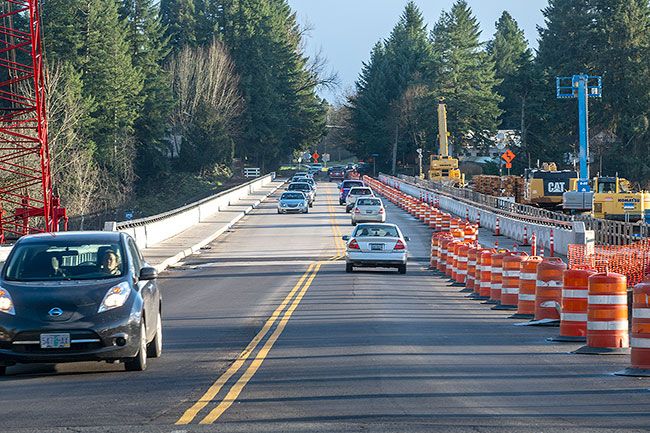Casey Kulla: Prioritize local roads and bridges over expressways


The way the American Story tells it, cars represent freedom. But about three of every 10 Oregonians don’t have a driver’s license and one of every 10 Oregon households doesn’t have access to a car.
I think Oregonians without a driver’s license should have — and I know that they could have — equal access to reliable transportation. That means connected sidewalks in town, safe shoulders or off-highway paths out of town, an array of cross-town and inter-city bus and van options that are frequent and safe, and Amtrak connections between Western Oregon cities and points east of the Cascades.
We also need to address the highways and bridges serving drivers, which are in rough shape. It’s going to take a ton just to begin taking better care of what we have now, let alone build onto it for the future.
While we clearly have different ideas about specific fixes — see, for example, recent Viewpoints arguments over overpasses vs. roundabouts on Highways 18 and 99W — I don’t see anyone arguing against safe infrastructure. Public works crews and ODOT staffers around our state work thoughtfully day after day to keep our roads open and safe in the face of challenging budget constraints.
The financial strain persists despite a grandiose transportation package passed by the Oregon Legislature in 2017, which not only promised to fund some enormous projects, but went on to codify them in state law.
The fact is, expanding freeways costs a lot of money, and inflation, the pandemic and a tariff war are making it ever more so. This time around, I hope state legislators like Yamhill County’s own Sen. Bruce Starr recognize that money spent on local roads and bridges goes a lot further than money spent on expressways, on-ramps, flyways and frontage roads, even though engineers tell us we need them.
We all have a part to play, beyond just paying gas taxes or EV registration fees. When I’m stuck in traffic, growing frustrated by the delay and worried about getting to work on time, I sometimes have to remind myself that I’m part of the problem because I’m helping create that traffic.
Roadways are engineered for specific ranges of vehicles, and their peak use often coincides with congestion, collisions and acts of traffic violence. Easing peak use even just a bit can make a lot of difference.
That doesn’t require a “you aren’t allowed to get where you need to go” command, either. The fact is, lawmakers and budget writers have the authority — the duty even — to provide voluntary options to get around without sitting in a car.
Examples include Safe Routes to Schools, the Community Paths program, the state transit plan, the funding priorities in the Active Transportation Inventory and, frankly, directing some of that 2017 project funding to city and county road departments.
There’s a lot of attention being paid these days to electrifying cars in Oregon, and ensuring along the way that EVs help cover the cost of our road network. Oregonians are early adopters compared to the rest of the country, and I can see why, as EVs are cheap to operate and fun to drive.
But I haven’t specifically argued here that “gas-powered vehicles are the problem” or “EVs need to pay their fair share.” That’s because so much of the cost, wear, danger and congestion is agnostic to a vehicle’s propulsion source.
The congestion doesn’t care if you are driving a clean, silent car or a classic hot rod with a carburetor. The roadbed doesn’t know if you charge your car with electricity at home or fill it with gasoline at a roadside station.
Oregon’s financial and logistical traffic challenges would still exist even if the 100,000 EVs now operating in Oregon came eventually to replace all 3.2 million of its gas-powered passenger vehicles.
Our road system is funded from a mix of sources, led by gas taxes, vehicle registration fees and, in the case of transit, a payroll tax. It has come to include a much higher registration fee for EVs, designed to balance out the lack of gas tax revenue from them.
For the most part, local road crews rely on revenue from the state highway fund as well. But at least 34 cities and two counties have, over the years, come to adopt at least modest gas taxes of their own.
If the Legislature considers slicing the state highway fund into smaller pieces or swelling the fund’s size by increasing the state gas tax, it seems important to realize cities and counties could by contributing as well. I hope legislators will take notice and encourage local funding serving as match for state allocations.
It all comes back to this: Regardless of whether they can afford a car or not, all Oregonians should have the freedom to move about, get to and from work or school, visit a grandparent or visit a national park.








Comments